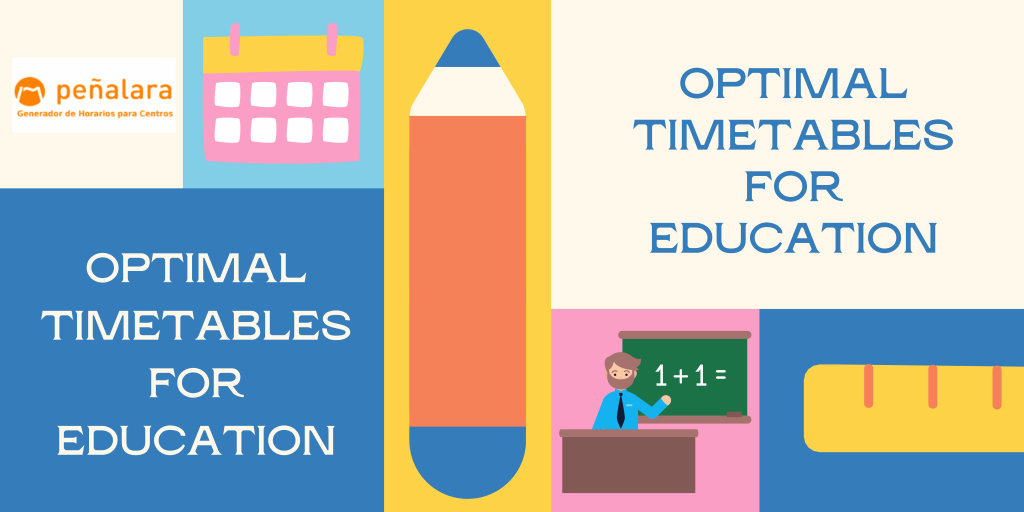A better schedule from a pedagogical point of view can improve the quality of education. Certainly, a good school timetable can increase students’ efficiency, achieve a better use of classrooms, as well as increase the satisfaction of teachers in their work. However, the criteria used to draw up timetables are not always obvious, nor can they be applied over and above the organisational needs that exist in each educational institution.
Schools usually try to establish one or other criteria for timetabling, adopting rules that help to achieve certain objectives. Nevertheless, in practice, these rules are only applied as far as possible. That is to say, they should be observed while being rationally balanced with organisational needs. For example, a pedagogical consideration might be that PE should be taught in the last hour of the morning, but if there is only one teacher for this subject this will obviously not be possible. Avoiding that all weekly class units of the same subject coincide in the early or late morning or after recess will also be conditioned by teacher availability.
Other criteria do not conflict so clearly with organisational constraints, but will undoubtedly be conditioned. Pedagogical guidelines applicable to the schedule, such as balancing the teaching load or avoiding too many lessons consecutively, may clash with the criterion of trying to achieve a timetable as compact as possible. In other words, the criteria for teachers’ timetables should not only be balanced between each other, but also with other preferences and within the organisational constraints that exist. Similarly, it should be kept in mind that the best use of classrooms from a pedagogical point of view should be adapted to their actual availability.
EReflection is needed to discern what criteria are applied in each school and with what priority. But once we know what we are looking for and to what extent, what is really important is to find it in practice. That is, to find solutions that satisfy an optimal compromise; those that, while meeting the academic and organisational requirements, observe as far as possible the established guidelines and preferences. So the question really is: Is there a tool that allows the weighting of certain criteria to be adapted in a flexible and optimal way to the academic organisation?
The answer is yes, there is a tool designed for this purpose and it is very effective in its usefulness. The scheduling software for educational institutions not only makes it possible to define different criteria and give them a weighting, but also to adjust the individual preferences of the elements that make up the school timetable. The best timetables will be achieved by adding flexibility to the strict order conditions. The solutions offered by the engine are optimal. We can state that GHC not only offers the necessary academic and organisational solutions with great efficiency, but also that these will observe as far as possible the guidelines and preferences established in each school.


